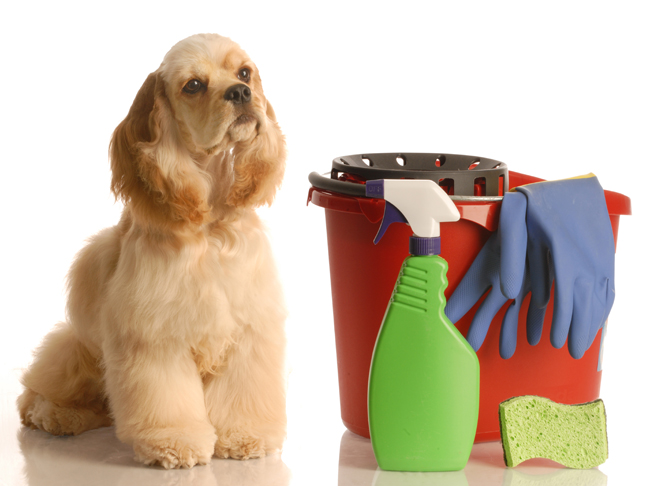Some household cleaning products are loaded with chemicals, and can be harmful to your pet after prolonged exposure. Today, rates of canine cancer are increasing, following the same trend of rates of human cancers, which has caused researchers to look more closely at a shared environmental pathogenesis.
We are not immune to airborne toxins in the home. According to a 1992 U.S. Environmental Protection Agency publication “Targeting Indoor Air Pollution,” the air inside the typical home is an average of 2-5 times more polluted than the air outside, and in extreme cases, it can be up to 100 times more contaminated – largely because of household cleaners and pesticides.
Health risks
The EPA has estimated that more than 50 percent of indoor pollution is a direct result of household cleaning products. People are vulnerable to the effects of perpetual exposure to the chemicals in these products (especially women who stay at home, whom the EPA reported have a 54 percent increased risk of cancer), and companion animals are at even greater risk due to their faster metabolisms and smaller lungs. Pets process these chemicals at a faster rate and absorb more of these toxins into their bloodstreams as they breathe them in more rapidly.
According to the Morris Animal Foundation, an initiative to research and cure canine cancer that is endorsed by the Children’s Oncology Group, Animal Cancer Foundation, MIT/Harvard (Broad Institute), and the Mayo Clinic, one in four dogs will die of cancer. Cancer is the No. 1 cause of disease-related death in dogs over the age of two. The National Cancer Institute, the global leader in human cancer research, has included the study of cancer in dogs within its Comparative Oncology Program since 2003.
Unspayed dogs now develop mammary tumors at four times the rate that women do. Breast cancer has been linked to chemicals found in cleaning products, particularly alkylphenols, the chemicals that produce the suds in many household cleaning products. A search of “ethoxylates,” an alkylphenol derivative, in the National Library of Medicine’s Household Products Database revealed no less than eight common household products by one top brand containing these known toxins.
Finding solutions
There are now many affordable lines of organic cleaning products available at most grocery stores, as well as countless books and articles on making one’s own effective household cleaners for far less than the cost of conventional cleaning products.
Just as the canaries once warned miners of the dangers that could befall them, increasing animal cancers, allergies and other health conditions may be warning us of the dangers of the chemicals that we have introduced into our homes. By using the numerous organic cleaning products now so readily available, or by saving money and easily making your own cleaning products, both pet and owner can breathe easier and live healthier lives.









